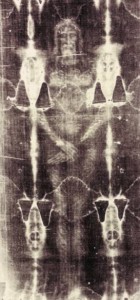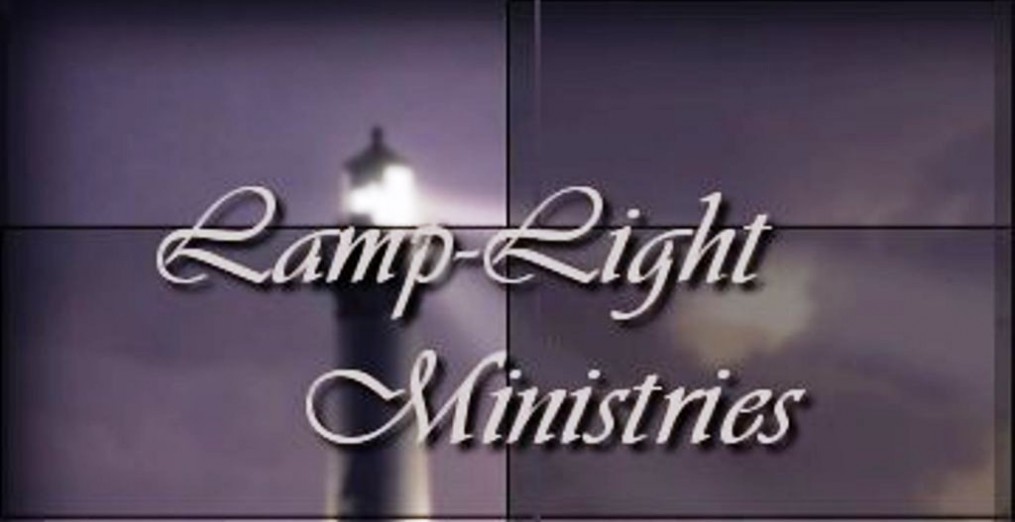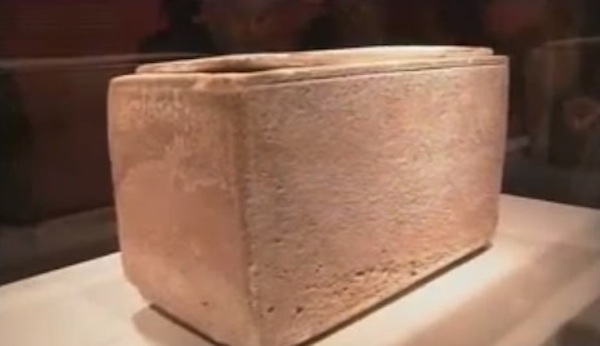
Archaeological Evidence for Jesus’ Life, Death, and Resurrection
By GF Herrin
One of the most widely debated pieces of biblical archaeology known to exist is the 14 `11 ” long by 3 ` 7 ” wide ancient linen cloth known as the Shroud of Turin. The Shroud is historically purported to be the burial cloth of Jesus. On the cloth itself is the image of the full body (front and back) of a crucified man with details of wound marks, blood stains, and what appears to be ancient coins (issued by Pilate between AD 29 – 32) on each of his eyes (Kenneth E. Stevenson and Gary R. Habermas, Verdict on the Shroud (Ann Arbor: Servant Books, 1981), 134, 79, 64 – 65, 27). If authentic, the Shroud could be one of the most important historical pieces of evidence for the resurrection of Christ.
The history of the Shroud can be definitively traced back to 1357 when Jeanne de Virgy, the widow of Geoffrey de Charny, exhibited the Shroud as the burial cloth of Jesus in a small church in the town of Lirey, one hundred miles southeast of Paris (Stevenson and Habermas, 14). The Shroud’s history prior to 1357 is less clear. There is reason to believe, though, that the Shroud may have been known at various times as the “image of Edessa”, the “Edessan image”,and the “Holy Mandylion” (Stevenson and Habermas, 17). In 525, the Mandylion cloth was found inside a wall niche in the Turkish city of Edessa (now Urfa). The cloth was taken to Constantinople where it was known as “the true likeness of Christ” (Stevenson and Habermas, 17). In 1204, the cloth disappeared from Constantinople after the city was attacked by Crusaders.
Interestingly, after the time of the cloth’s discovery in the sixth century, Christian art shifted in its characterization of Christ. Prior to that time, there were few similarities among various paintings of Jesus. Christ was painted as being beardless and short haired. Beginning in the sixth century, though, the majority of art characterized Jesus as having a beard with facial features similar to the image found on the Shroud. Thus, there is a possibility that artists used the Shroud as a model for their representations of Christ (Stevenson and Habermas, 16-17).
Prior to 525, a legendary history exists of the cloth dating back to shortly after the time of Christ. The story goes that a disciple (perhaps Jude, one of the Twelve) came to Edessa to heal Abgar V, a first-century ruler of Edessa who was stricken by leprosy. The ruler had written to Jesus while He was still alive and the Lord had promised to send a disciple to him. According to the account, Abgar was healed after seeing the cloth of Christ’s image and Christianity spread in Edessa as a result of the miracle.
There are questions regarding the location of the Cloth between the Mandylion’s disappearance in 1204 and the appearance of the Shroud in 1357. One theory is that the cloth was in the possession of the Knights Templars, a religious order that was charged with defending the “crusader territories” in the Holy Land. The Knights Templars possessed the power, strength, and religious ferver to defend the burial cloth from attacks during that time. So, it is natural to believe that they would have been the ones who would have been responsible for guarding it. Also, as part of their ceremonial rites, an image of God was displayed to the Knights in order for them to pay homage to it. When the Knights were finally displaced by King Philip of France in 1307, one of the men who was burned at the stake for his refusal to surrender was Geoffrey de Charnay, who had the same last name (spelling often varied) of the first owners of the Shroud, Geoffrey of Lirey.
In 1453, the House of Savoy took possession of the Shroud. Eventually, the King of Italy came from this family. The exiled King of Italy, Umberto II owns the Shroud, now. The Shroud was kept in a special chapel in Chambery, France where it was damaged in a fire that broke out in 1532. In 1578, the Shroud was moved to Turin, Italy, where it has remained, except for a six year period during World War II.
In 1898, Italian photographer, Secondo Pia, photographed the Shroud during an exhibit. It was during the development of his pictures that the photographer discovered that the figure on the Shroud is actually a negative image that can be seen clearly when viewed on film. Through the examination of the film it can be clearly seen that the figure on the Shroud appears to be the front and back of a man’s body who was crucified. The man appears to be 5 feet 11 inches tall, Hebrew, and approximately 30 – 35 years of age. He appears to wear his hair in a pigtail which would have been consistent with the manner in which a first century Hebrew man would have worn his hair.
Three of the pierce wounds found on the image on the Shroud are consistent with those of a man who was crucified. One pierce mark is visible on the left wrist which covers the right hand. There appears to be blood on the cloth that must have flowed from the hand wounds. There are also pierce marks on each heel where it appears that a single spike was driven to nail them together. In addition, there are between ninety and one hundred scourge wounds on the body which seem to indicate that the man was flogged severely. There is also a pierce mark on his side that matches the size of a wound that would have been made by a Roman lancia (spear). There are also multiple deep wounds all over the scalp of the man on the Shroud.
In 1978, the Shroud of Turin Research Project gathered a team of scientists in Turin, Italy for an in depth examination and analysis of the Shroud. From this study, they were able to determine that the stains found on the linen cloth were in fact blood. Official spokesman for the Shroud of Turin Research Project, Kenneth Stevenson, and Gary Habermas write:
Of particular interest is the fact that the wounds in their entirety exactly match the wounds Christ received as recorded in the gospels. More importantly, for scientific purposes, all of the wounds are anatomically correct to a surprising level of detail. They include such medically accurate facts as a characteristic “halo” around bloodstains suggesting the separation of blood and serum; flecking and rivulets true to blood flows in nature; and swelling of the abdomen that indicates asphyxiation, the usual cause of death in crucifixion. All of these medical facts, as well as others, were unknown in the fourteenth century.
In addition, the body seems to display indications that rigor mortis had set in but there are no signs of decay. This seems to indicate that the body exited the burial cloth shortly after being interred. What is additionally puzzling is that according to a scientific team pathologist, it does not appear that the body was unwrapped from the cloth since so many bloodstains were intact and un-wrapping it would have disrupted the bloodstains.
In addition, the scientists for the project found no evidence to support a conclusion that the image was the result of painting. There is no evidence to indicate that the image shows any form of pigmentation. In fact, the image on the linen is on the topmost part of the cloth. In other words, the image does not penetrate down through the thread of the cloth. An in depth analysis, in fact, confirmed the conclusions that Air Force scientists John Jackson and Eric Jumper reached in 1976 that the image is actually three dimensional.
In 1988, carbon dating testing was performed on a small piece of the shroud. After tests were analyzed for the material used, a carbon date of the middle-ages was determined. But in 2005, Raymond Rogers, a Los Alamos National Laboratory scientist, determined that the shroud sample used could not have been from the original cloth because it contained cotton. The Shroud had in fact been damaged in the fire of 1532. As a result, repairs had been done to part of the cloth. The cloth sample used for the 1988 Carbon 14 dating was from the repaired area which contained cotton (Raymond N. Rogers, “Scientific Method Applied to the Shroud of Turin: A Review”. [Online] Available: <http://www.shroud.com/pdfs/rogers2.pdf> [November 30, 2009]). Therefore, the Carbon 14 dating showed a later date for the Shroud than the cloth from the other areas might have shown.
In fact, there is reason to believe that the Shroud is of first century middle-eastern origin. Gilbert Raes, a professor at the Ghent Institute of Textile Technology in Belgium inspected threads taken from the cloth in 1973. He concluded that the thread used was a type commonly used in the middle-east in the first century (Stevenson and Habermas, 27). In addition, in 1973, Swiss criminologist, Max Frei, examined cloth taken from the Shroud. He found pollen spores from thirty-three different plants found in the middle-east and Turkey on the cloth sample. Since the Shroud has remained in Europe since 1357, it is likely that its history included a stay in Palestine and Turkey before 1357. Given that the Mandylion was apparently originated in Palestine, with some time spent in Turkey and given that the Shroud’s history must by necessity have included stays in the middle-east and Turkey, it seems reasonable to conclude the Mandylion and the Shroud are in fact one and the same.
Even with the findings that have indicated a pre-1300 origin, there have been fraud claims launched against the Shroud. In October of 2009, Italian researcher, Professor Luigi Garlaschelli, claimed that he had successfully reproduced the Shroud image using art techniques that would have been possible in the medieval times. In doing this, he has claimed that the Shroud was a 14th century fake (Luigi Garlaschelli, “Shroud Reproduction” [Online] Available: <http://sites.google.com/site/luigigarlaschelli/shroudreproduction> [November 30, 2009]). But, French Shroud researcher, Dr. Thibault Heimburger, analyzed the composition of the materials and the appearance of the reproduction in comparison to the actual Shroud. He states that Garlaschelli’s reproduction is the closest in appearance to the Shroud of any he has seen. But, Heimburger states that the materials used to reproduce the image are “very far from the fundamental properties of the Shroud image” (Thibault Heimburger, “Comments About the Recent Experiment of Professor Luigi Garlaschelli” [Online] Available: < http://www.shroud.com/pdfs/thibault-lg.pdf> [November 30, 2009]). He also states that the dry powder that was used to produce the image in the reproduction would have been lost in the process of all the rolling and folding of the Shroud over the years and there would not have been enough powder left to cause the chemical reactions between the acidic impurities and the cellulose that produced the color.
This recent attempt to reproduce the image on the Shroud artistically underscores some of the difficulties that must be overcome in claiming that it is the creation of an artist. First of all, the image on the cloth is in a negative form. Why would someone paint an image in a form that would show up better when viewed photographically? For that matter, how would someone in the first century or even the 14th century (when Jeanne de Virgy first exhibited “the Shroud”) possess the technology to paint it in a negative form? After all, the concept of negativity was not understood until photography was invented in the nineteenth century. As Habermas states: “It was almost ludicrous to suggest that a painter, depicting Jesus’ body as it might have appeared on his burial garment, would have chosen to do so with an artistry and detail that would have not been discovered for more than 500 years, until the invention of photographic process which his age knew nothing about.”
Also, there are some are basic things that the artist would not have known about. One is the location of the pierce mark on the wrist of the man on the Shroud. According to Habermas, if the artist had portrayed the wound location in the way that tradition and most artists illustrated, then it is more likely that he would have chosen the palm area instead of the wrist location for the pierce marks. In addition, it is unlikely that the artist would have known about the physical appearance of the extended abdomen which was caused by the medical condition of asphyxiation, the typical cause of death for the crucifixion victim.
Since the 1978 project, other scientists have closely examined the cloth samples to determine the origins of the image on the Shroud. The cause of the image on the Shroud is still unknown. There does not appear to be any indication that it was created by an artist, though. Both vermillion (a paint ingredient) and iron oxide are present on the cloth. But according to Dr. John Heller, Biophysicist and Professor of Internal Medicine at Yale, who examined the samples from the cloth, there is not enough of either to account for the image or the blood stains found on it (John H. Heller, Report on the Shroud of Turin (Boston: Houghton Mifflin Company, 1983), 193 – 94). In addition, no foreign substance found on the Shroud can account for the image on the cloth (Stevenson and Habermas, 144). Analysis done on the blood stains have shown that there is strong evidence to indicate that the blood was on the cloth before the image was made (Heller, 202 – 03).
In all, the physical appearance of the man on the Shroud matches exactly what we would expect Jesus to have looked like after being struck with fists and staffs, mockingly crowned with thorns, scourged, crucified to death, and speared (Matt. 26:67; 27:26, 30, 35; John 19:31 – 32, 34). Being a first century Jew He would have had long hair and a beard, like the man on the Shroud. Having been struck in the face and crowned with thorns, he would have been bruised and bloodied in His face and scalp, like the man on the Shroud. Also, having been scourged, crucified and speared in the side He would have had multiple wound marks all over His body and pierce marks in His wrists, feet and side, like the man on the Shroud. We have no way of knowing for sure if the Shroud is authentic, but given the fact that it has been proclaimed historically to be the burial cloth of Jesus since 1357 and more than likely the first century, it certainly seems likely that it is so. If it is authentic, then it would seem that the Resurrection event itself was the cause of the image being radiated or scorched onto the burial cloth of Jesus. Regardless, the truth of the facts of Jesus’ crucifixion and resurrection does not depend on the Shroud in any way. There is more than enough evidence already to say that it is reasonable to believe in Him.



